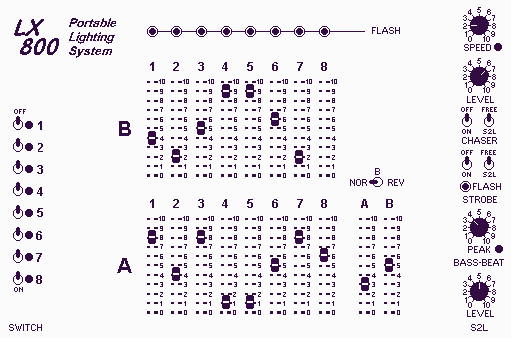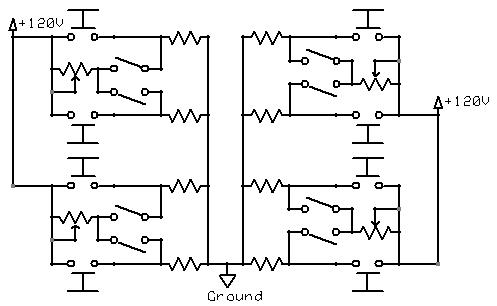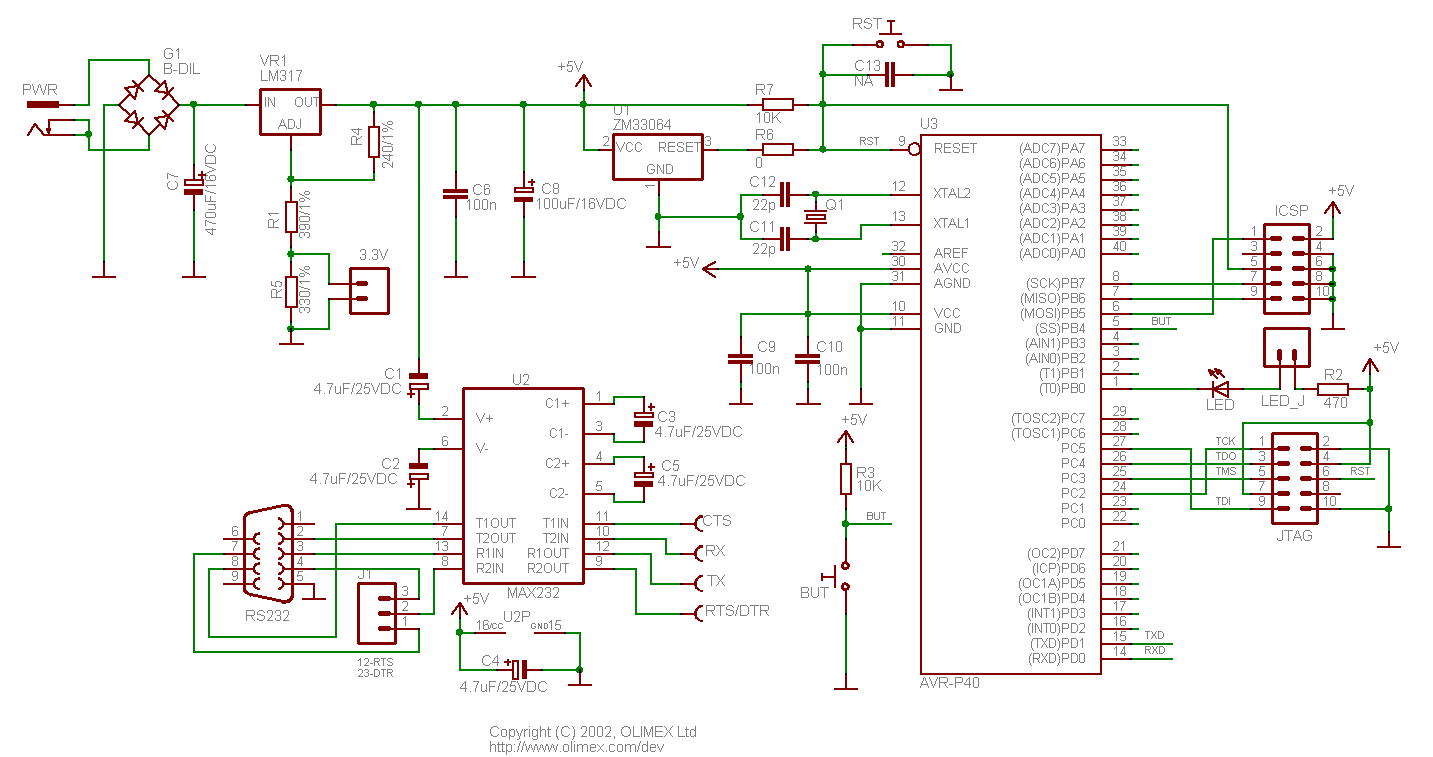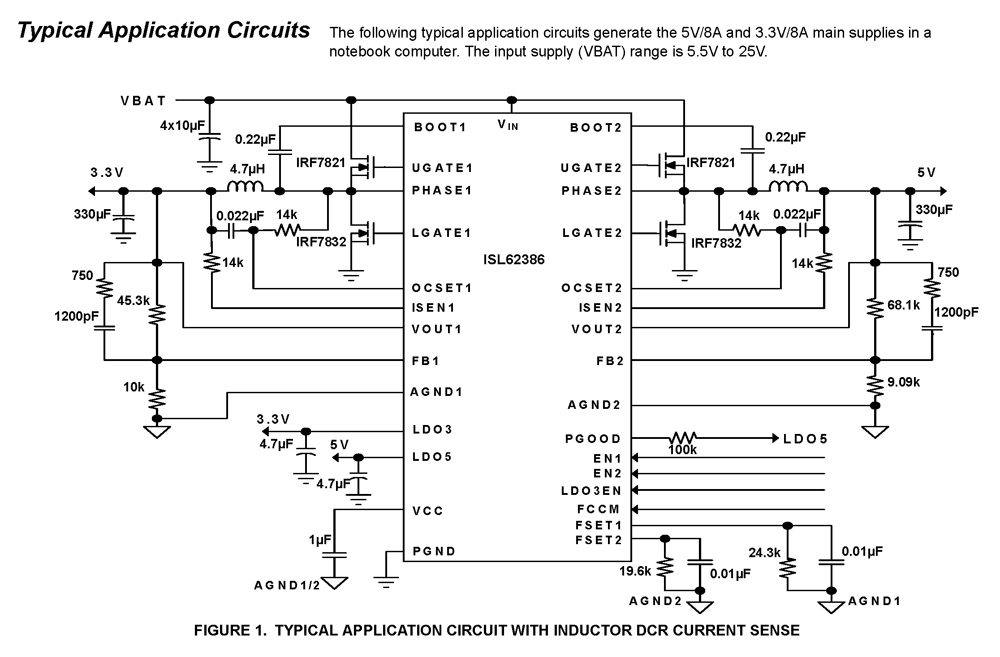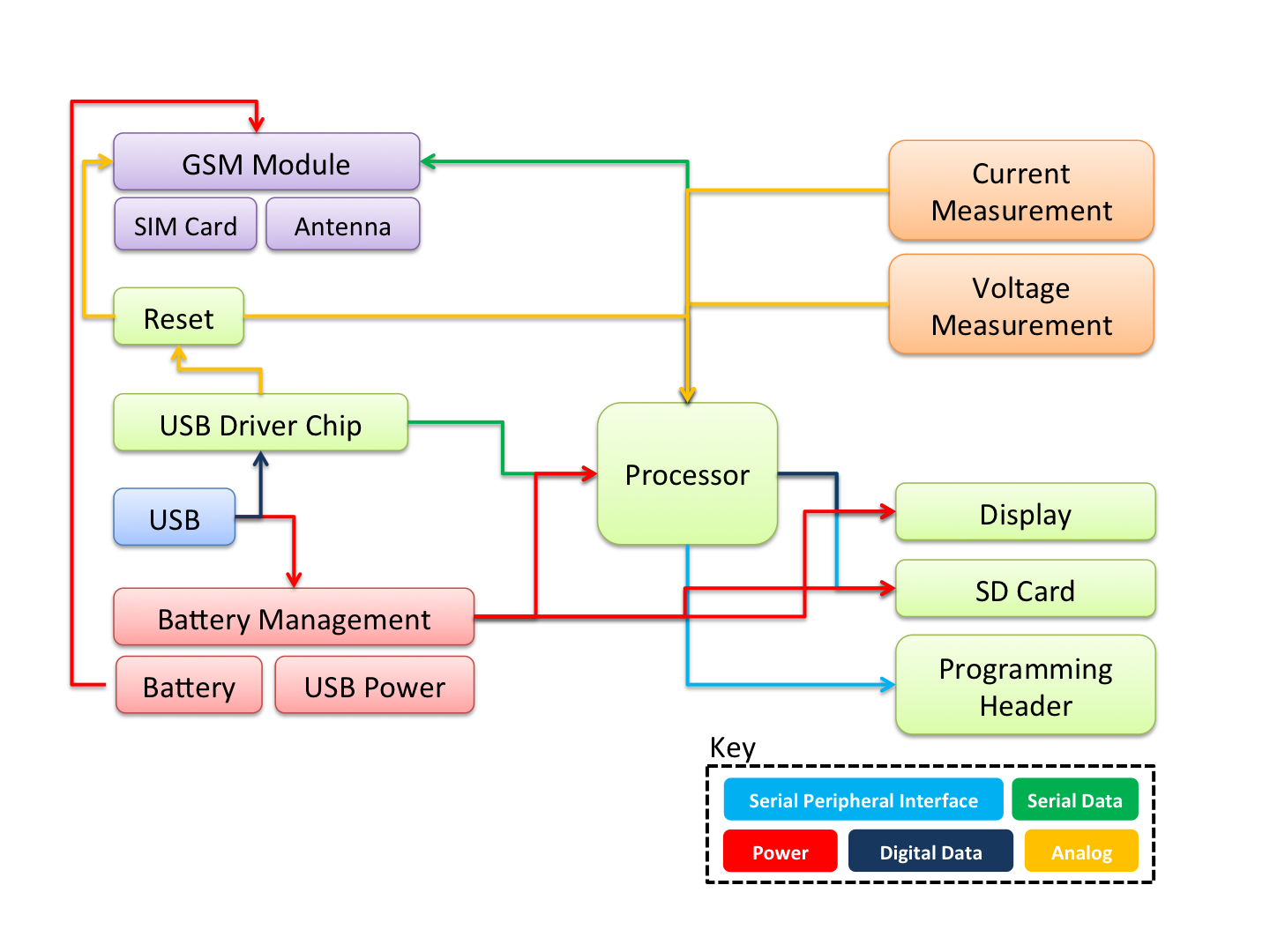
MUTS Multi-Target Development System
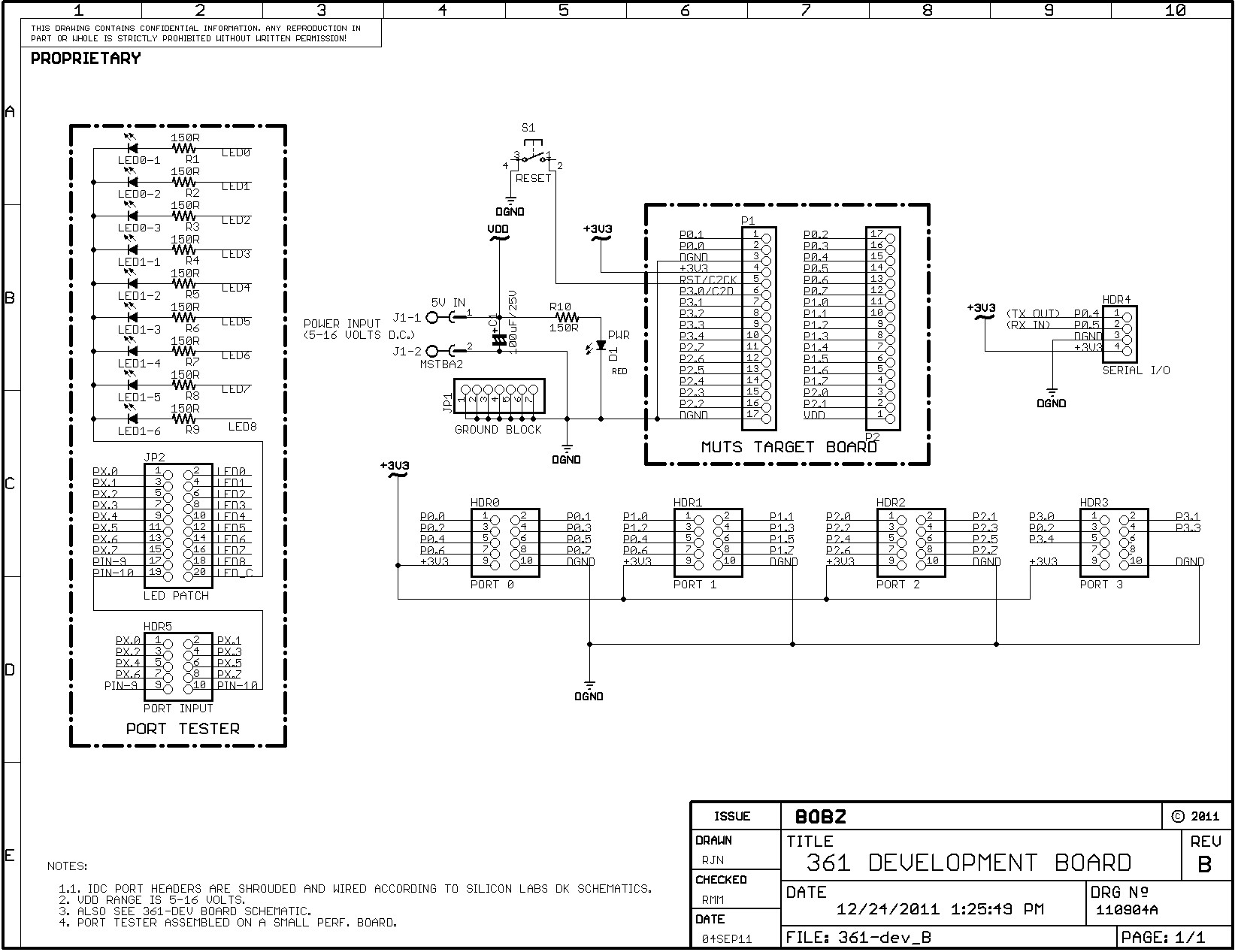
The following details the design, construction, operation, and application of the Multiple Target Development System (MUTS). The MUTS includes a Target board that connects to a Silicon Laboratories (SL) Debug Adapter for programming the Target board using the SL Integrated Development Environment (IDE). This allows the Target to function as the main processor in a project while applications are developed concurrently with the IDE. The MUTS Target board is compatible with several Silicon Laboratories microprocessors housed in 32-pin LQFP physical packages, such as the C8051F361 and C8051F310. These Target boards are utilized in various projects. Completed Target boards populated with a C8051F361 chip are illustrated in the accompanying photos. Photo 1 depicts revision 3 of the board, which includes a connector for the C2 programming adapter and an additional connector for serial connections. Photo 2 displays revision 2 of the board, which features only a connector for the C2 programming adapter. Revision 3 is now the standard for all Target board shipments. The primary function of the Target board is to offer a compact platform for mounting the processor chip, regulator, crystal, programming connector, and serial port connector. It also provides access to all I/O ports, 3.3 Volt regulated power, and the reset pin. Due to its dual-inline physical format, it can be easily inserted into a breadboard socket or connected to 0.1-inch spaced sockets on a perforated project board. Consequently, the Target board supplies all necessary facilities and connections for project development. Photo 3 illustrates a 361 Target board integrated into a hand-wired test fixture used for in-house verification of completed Target boards. The test fixture is constructed using a prototyping board from Parallax, Inc., as referenced in the Assembly Guide. These boards, identified by product number 45305, are both cost-effective and high-quality, making them suitable for projects fitting within a 3 by 4 inch format or stacked boards of that size. For further details, refer to Schematic 1 labeled "C8051F310/361 CPU BOARD," which outlines the components, circuitry, and pinouts for the module. Additionally, Schematic 2 illustrates the wiring of the test fixture shown in Photo 3, along with a small LED test board designed to test port pins configured as push-pull. The board is intended to provide a fully operational microprocessor system on a module that can be powered and utilized without the need to wire essential operational components like a regulator, crystal oscillator, and programming interface connector. The board's DIP format, featuring two 0.1-inch header rows, is conducive to connections on a solderless breadboard or socketed wiring on a perforated board. In addition to offering a convenient hardware platform, several programming files are included on the documentation disk, enabling rapid checkout of the completed module. These files are in Intel hex format and can be downloaded to the module via its C2 programming header and the Silicon Laboratories Integrated Development Environment (IDE). This provides a straightforward method for verifying the functionality of port pins and commonly used chip features, such as the serial port and external crystal oscillator. For verification using the internal oscillator, the 361-25I.hex file should be loaded, allowing the confirmation of the Target's operation with a 24.5 MHz internal oscillator and a serial port operating at 9600 baud. For verification with a 24.5 MHz external crystal oscillator and a PLL-multiplied clock frequency of 100 MHz, the 361_100X.hex file should be loaded, which enables the serial port to operate at 38400 baud.
The Multiple Target Development System (MUTS) serves as an efficient platform for developing and testing applications based on Silicon Laboratories microprocessors. The integration of the Target board with the SL Debug Adapter facilitates a streamlined programming process through the SL Integrated Development Environment (IDE), enhancing the user experience during application development. The board's design accommodates multiple microprocessors, allowing flexibility in project specifications and requirements.
The physical layout of the Target board, with its accessible I/O ports and power connections, ensures ease of integration into various project setups. The provision of a reset pin and regulated power supply at 3.3 volts further enhances the board's functionality, making it suitable for a wide range of applications. The inclusion of both C2 programming and serial connection ports allows for versatile communication options, essential for debugging and data transfer during development.
The use of a prototyping board for the test fixture underscores the emphasis on quality and reliability in the verification process. The availability of pre-configured programming files simplifies the testing procedure, allowing developers to quickly assess the functionality of the microprocessor and its associated components. This capability is crucial for ensuring that the system operates as intended before deployment in a final project.
Overall, the MUTS provides a comprehensive solution for developers working with Silicon Laboratories microprocessors, combining ease of use, flexibility, and robust testing capabilities into a single, compact platform.The following describes the design, construction, operation and use of the Multiple Target Developent System (MUTS). The MUTS consists of a Target board (Target) that can connect to a Silicon Laboratories (SL) Debug Adaptor to program the Target board with the SL Integrated Development Environment (IDE).
Thus, the Target can be used as the main pr ocessor in a project but applications can be developed while the Target is connected to the IDE. The MUTS Target board supports several Silicon Laboratories microprocessors with 32-pin LQFP phsical packages and compatible pin configurations such as the C8051F361 and C8051F310. The MUTS Target boards are used in several of our projects. Completed Target boards, populated with a C8051F361 chip, are shown in Photo 1 (above) and in Photo 2.
Photo 1 shows revision 3 of the board which, in addition to the connector for the C2 programming adapter, has a second connector for serial connections. Photo 2 shows revision 2 of the board that has only a connector for a C2 programming adapter on one end of the board.
Revision 3 of the board is now shipped with all Target board orders. The primary use of the Target board is to provide a reasonably small board that can be used to mount the processor chip, regulator, crystal, programming connector and a serial port connector. The board also provides access to all I/O ports, 3. 3 Volt regulated power and the reset pin. Because of its dual-inline physical format, it can be easily plugged into a breadboard socket or plugged into tenth-inch spaced sockets mounted on a perforated project board.
Thus, the Target board provides all of the facilities and connections needed for project development. Photo 3 shows a 361 Target board plugged into a hand-wired test fixture used for in-house verification of finished Target boards.
The test fixture is built with a prototyping board available from Parallax, Inc. ®, as noted in the Assembly Guide. These boards, product number 45305, are inexpensive and of high quality. We recommend them for projects that will fit in a 3 by 4 inch format or on a stack of boards of this size. For the following, refer to Schematic 1 titled "C8051F310/361 CPU BOARD" The schematic shows the components, circuitry and pinouts for the module.
Also, Schematic 2 shows the wiring of the test fixture shown in Photo 3. This schematic also shows a small LED test board that can be made to test port pins configured as push-pull. The board was designed to provide a complete operable microprocessor system on a module that can be powered up and used without having to wire the basic operational components such as a regulator, crystal oscillator and programming interface connector.
The board`s DIP format, with two 0. 1 inch header rows, is well suited to connections on a solderless breadboard or socketed wiring on a perforated board as shown in In addition to providing a convenient hardware platform, several programming files are furnished on the documentation disk that allow fast checkout of the completed module. These files are Intel hex format files that can be downloaded to the module using its C2 programming header and the Silicon Laboratories Integrated Development Environment (IDE).
This provides an easy way to verify the functionality of port pins and commonly-used chip features such as the serial port and the external crystal oscillator. 25 MHz with Internal Clock - To verify the chip using the internal oscillator, load the 361-25I. hex. This allows you to verify the operation of the Target that uses a 24. 5 MHz internal oscillator and its serial port operating at a 9600 baud. 100 MHz with Crystal Clock - Load the 361_100X. hex file to verify the Target chip`s operation using a 24. 5 MHz external crystal oscillator, and a PLL-multiplied clock frequency of 100 MHz. With these settings, the serial port operates at a 38400 baud. 100 MHz with Internal Clock - To check the Target chip`s op 🔗 External reference
The Multiple Target Development System (MUTS) serves as an efficient platform for developing and testing applications based on Silicon Laboratories microprocessors. The integration of the Target board with the SL Debug Adapter facilitates a streamlined programming process through the SL Integrated Development Environment (IDE), enhancing the user experience during application development. The board's design accommodates multiple microprocessors, allowing flexibility in project specifications and requirements.
The physical layout of the Target board, with its accessible I/O ports and power connections, ensures ease of integration into various project setups. The provision of a reset pin and regulated power supply at 3.3 volts further enhances the board's functionality, making it suitable for a wide range of applications. The inclusion of both C2 programming and serial connection ports allows for versatile communication options, essential for debugging and data transfer during development.
The use of a prototyping board for the test fixture underscores the emphasis on quality and reliability in the verification process. The availability of pre-configured programming files simplifies the testing procedure, allowing developers to quickly assess the functionality of the microprocessor and its associated components. This capability is crucial for ensuring that the system operates as intended before deployment in a final project.
Overall, the MUTS provides a comprehensive solution for developers working with Silicon Laboratories microprocessors, combining ease of use, flexibility, and robust testing capabilities into a single, compact platform.The following describes the design, construction, operation and use of the Multiple Target Developent System (MUTS). The MUTS consists of a Target board (Target) that can connect to a Silicon Laboratories (SL) Debug Adaptor to program the Target board with the SL Integrated Development Environment (IDE).
Thus, the Target can be used as the main pr ocessor in a project but applications can be developed while the Target is connected to the IDE. The MUTS Target board supports several Silicon Laboratories microprocessors with 32-pin LQFP phsical packages and compatible pin configurations such as the C8051F361 and C8051F310. The MUTS Target boards are used in several of our projects. Completed Target boards, populated with a C8051F361 chip, are shown in Photo 1 (above) and in Photo 2.
Photo 1 shows revision 3 of the board which, in addition to the connector for the C2 programming adapter, has a second connector for serial connections. Photo 2 shows revision 2 of the board that has only a connector for a C2 programming adapter on one end of the board.
Revision 3 of the board is now shipped with all Target board orders. The primary use of the Target board is to provide a reasonably small board that can be used to mount the processor chip, regulator, crystal, programming connector and a serial port connector. The board also provides access to all I/O ports, 3. 3 Volt regulated power and the reset pin. Because of its dual-inline physical format, it can be easily plugged into a breadboard socket or plugged into tenth-inch spaced sockets mounted on a perforated project board.
Thus, the Target board provides all of the facilities and connections needed for project development. Photo 3 shows a 361 Target board plugged into a hand-wired test fixture used for in-house verification of finished Target boards.
The test fixture is built with a prototyping board available from Parallax, Inc. ®, as noted in the Assembly Guide. These boards, product number 45305, are inexpensive and of high quality. We recommend them for projects that will fit in a 3 by 4 inch format or on a stack of boards of this size. For the following, refer to Schematic 1 titled "C8051F310/361 CPU BOARD" The schematic shows the components, circuitry and pinouts for the module.
Also, Schematic 2 shows the wiring of the test fixture shown in Photo 3. This schematic also shows a small LED test board that can be made to test port pins configured as push-pull. The board was designed to provide a complete operable microprocessor system on a module that can be powered up and used without having to wire the basic operational components such as a regulator, crystal oscillator and programming interface connector.
The board`s DIP format, with two 0. 1 inch header rows, is well suited to connections on a solderless breadboard or socketed wiring on a perforated board as shown in In addition to providing a convenient hardware platform, several programming files are furnished on the documentation disk that allow fast checkout of the completed module. These files are Intel hex format files that can be downloaded to the module using its C2 programming header and the Silicon Laboratories Integrated Development Environment (IDE).
This provides an easy way to verify the functionality of port pins and commonly-used chip features such as the serial port and the external crystal oscillator. 25 MHz with Internal Clock - To verify the chip using the internal oscillator, load the 361-25I. hex. This allows you to verify the operation of the Target that uses a 24. 5 MHz internal oscillator and its serial port operating at a 9600 baud. 100 MHz with Crystal Clock - Load the 361_100X. hex file to verify the Target chip`s operation using a 24. 5 MHz external crystal oscillator, and a PLL-multiplied clock frequency of 100 MHz. With these settings, the serial port operates at a 38400 baud. 100 MHz with Internal Clock - To check the Target chip`s op 🔗 External reference
Warning: include(partials/cookie-banner.php): Failed to open stream: Permission denied in /var/www/html/nextgr/view-circuit.php on line 713
Warning: include(): Failed opening 'partials/cookie-banner.php' for inclusion (include_path='.:/usr/share/php') in /var/www/html/nextgr/view-circuit.php on line 713
